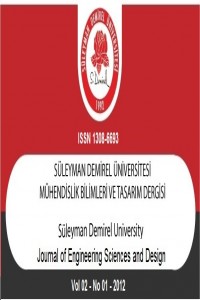Abstract
Passive and semi-active control devices are widely utilized as supplemental damping strategies for response reduction in civil engineering structures subjected to strong earthquakes and severe winds. Passive control devices require no external power supply. Total during an earthquake. Active control strategies, on the other hand, are generally more effective, but they are disadvantageous as energy cannot increase, therefore the system stays stable. But passive controllers are not as effective as semi-active, active, or hybrid ones. Semi-active control devices' input power requirements are less than active devices. This fact makes semi-active controllers useful in case of a power cut they need large amounts of power while they are in action, and they may result in instabilities of the controlled structure. A hybrid control which consists of passive and semi-active controller is studied in order to benefit from advantages of both strategies and to compensate their weak properties. In the current study, a passive base isolator and a semi-active magnetorheological damper are applied to a three-story frame structure. The benefits of hybrid application of two control systems are revealed.
Keywords
Abstract
Passive and semi-active control devices are widely utilized as supplemental damping strategies for response reduction in civil engineering structures subjected to strong earthquakes and severe winds. Passive control devices require no external power supply. Total energy cannot increase, therefore the system stays stable. But passive controllers are not as effective as semiactive, active, or hybrid ones. Semi-active control devices' input power requirements are negligible when compared to active devices. This fact makes semi-active controllers useful in case of a power cut during an earthquake. Active control strategies, on the other hand, are generally more effective, but they are disadvantageous as they need large amounts of power
while they are in action, and they may result in instabilities of the controlled structure. A hybrid control which consists of passive and semi-active controllers is studied in order to benefit from advantages of both strategies and to compensate their weak properties. In the current study, a passive base isolator and a semi-active magnetorheological damper are applied to a
three-story frame structure. The benefits of hybrid application of two control systems are revealed. The control method is based on the theory of linear quadratic regulator (LQR). The results are compared with respect to a base isolated structure. The structural responses are satisfactory moreover the isolator is protected from detrimental effects of the ground excitation.
The interstory drift reduction at the base level when compared to the response of the base isolated structure is approximately 50%. As a result the base displacements and velocities are reduced by additional damping in the base level. Thus the base isolators are protected. On the other hand, the superstructure’s responses increase due to the presence of large damping in the base level.
Keywords
Details
| Primary Language | English |
|---|---|
| Subjects | Engineering |
| Journal Section | İnşaat Mühendisliği |
| Authors | |
| Publication Date | January 9, 2012 |
| Submission Date | December 28, 2009 |
| Published in Issue | Year 2012 Volume: 2 Issue: 1 |


